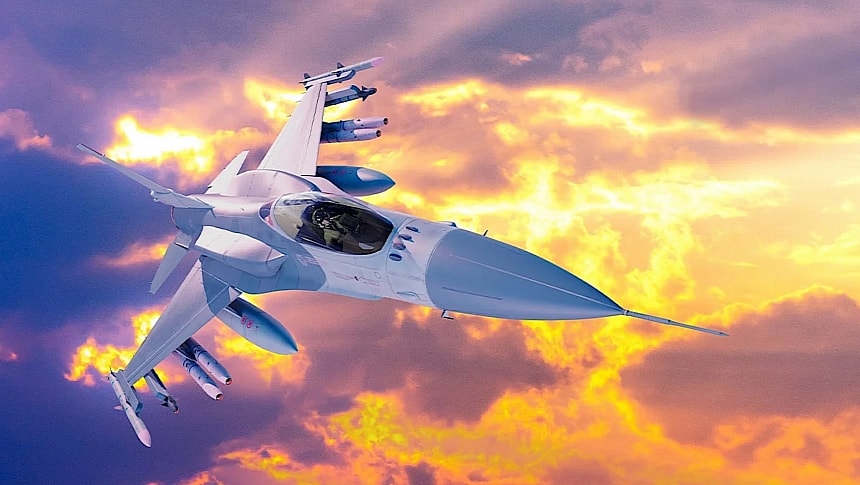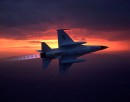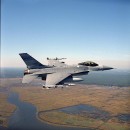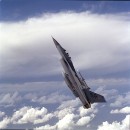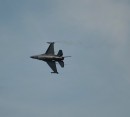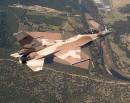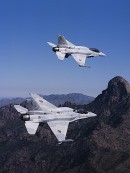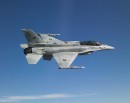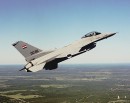It's been over three years since we learned for the first time of defense contractor L3Harris working on a new type of virtual armor for the F-16 fighter jet. Called Viper Shield, it now once again falls under the spotlight after its maker announced it reached another milestone in the development of the system.
Viper Shield is technically an electronic warfare system. It is meant to be used to detect threats, both radar and electronic, and relay info about them to the pilot, while at the same time integrating with the plane's countermeasures.
The system was primarily designed for the F-16 Block 70/72 aircraft configuration, but it could be deployed on legacy F-16 versions as well.
The Block 70/72 is described by Lockheed Martin, the plane's maker, as the most advanced fourth-generation fighter. It's also one of the most widespread, with over 4,700 of them deployed in service with some 30 air forces worldwide, including the ones in the Middle East, Asia and Europe.
The plane is powered by a single Pratt & Whitney turbofan engine capable of generating 29,000 pounds of thrust. What sets it apart is the long list of advanced systems it packs, including top-of-the-line avionics, radars, and displays.
The Viper Shield, in its most recent incarnation, is still undergoing testing. Previously, it was integrated with the APG-83 AESA radar the F-16s are equipped with, and now we hear of it having concluded something called the Drop 4 hardware and software testing.
The procedures took place at the U.S. Air Force (USAF) Integrated Defensive Avionics Laboratory and involved the AN/ALQ-254(V)1 Viper Shield suite.
It's the version that aside from offering protection against the most modern threats it can also receive upgrades as soon as new capabilities are available and needed. It is also the production-representative hardware, so as close as possible to what will actually be deployed on the airplanes.
During the trial, the Viper Shield proved it can identify and display threats even when its surroundings are literally flooded with background radio frequencies. The system managed to pick up multiple threats, determine what they are, and sort them out for the pilot.
On top of that its full integration with all of the F-16s systems means pilots will have access to an improved interface complete with the countermeasure technology that allows the plane to fire chaff and flares.
The Drop 4 procedures have been deemed crucial for the electronic warfare system as it showed "an important level of system maturity."
Despite the success of the test it's still unclear when work on the Viper Shield will end and true mass rollout will begin. L3Harris says it "will continue to refine and advance this system for warfighters globally."
The system was primarily designed for the F-16 Block 70/72 aircraft configuration, but it could be deployed on legacy F-16 versions as well.
The Block 70/72 is described by Lockheed Martin, the plane's maker, as the most advanced fourth-generation fighter. It's also one of the most widespread, with over 4,700 of them deployed in service with some 30 air forces worldwide, including the ones in the Middle East, Asia and Europe.
The plane is powered by a single Pratt & Whitney turbofan engine capable of generating 29,000 pounds of thrust. What sets it apart is the long list of advanced systems it packs, including top-of-the-line avionics, radars, and displays.
The Viper Shield, in its most recent incarnation, is still undergoing testing. Previously, it was integrated with the APG-83 AESA radar the F-16s are equipped with, and now we hear of it having concluded something called the Drop 4 hardware and software testing.
The procedures took place at the U.S. Air Force (USAF) Integrated Defensive Avionics Laboratory and involved the AN/ALQ-254(V)1 Viper Shield suite.
It's the version that aside from offering protection against the most modern threats it can also receive upgrades as soon as new capabilities are available and needed. It is also the production-representative hardware, so as close as possible to what will actually be deployed on the airplanes.
During the trial, the Viper Shield proved it can identify and display threats even when its surroundings are literally flooded with background radio frequencies. The system managed to pick up multiple threats, determine what they are, and sort them out for the pilot.
On top of that its full integration with all of the F-16s systems means pilots will have access to an improved interface complete with the countermeasure technology that allows the plane to fire chaff and flares.
The Drop 4 procedures have been deemed crucial for the electronic warfare system as it showed "an important level of system maturity."
Despite the success of the test it's still unclear when work on the Viper Shield will end and true mass rollout will begin. L3Harris says it "will continue to refine and advance this system for warfighters globally."
